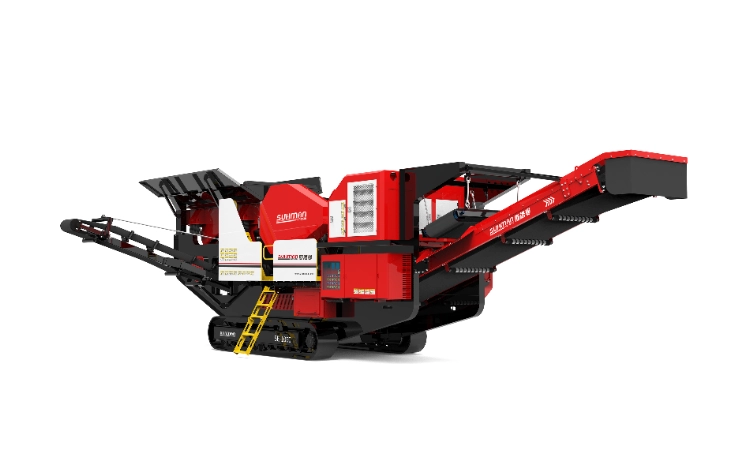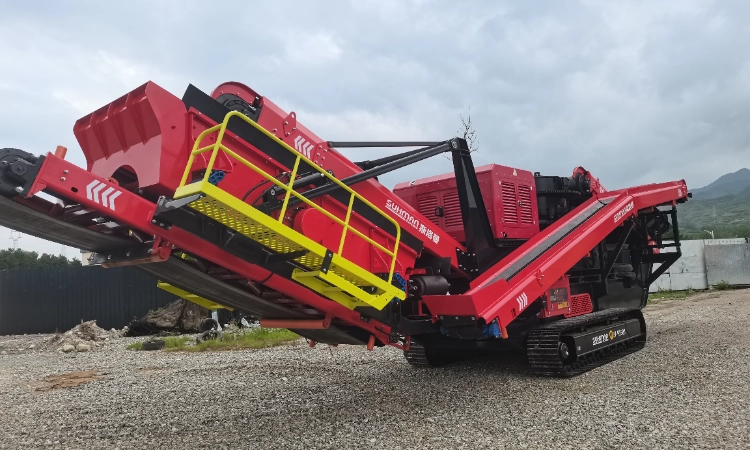Jaw Crusher vs. Gyratory Crusher: A Comprehensive Comparison
Release time: 2025-03-04
Introduction to Crushers
Crushers are vital machines in industries like mining, construction, quarrying, and recycling. They break down large rocks, ores, or materials into smaller sizes for further processing or use. Among the various types, jaw crushers and gyratory crushers are widely used for primary crushing. Though both handle tough, abrasive materials, they differ in design, operation, capacity, and application. This article offers a detailed comparison to help you understand their features and choose the right one for your needs.

Jaw Crusher: Design and Operation
Design Features
A jaw crusher has a fixed jaw and a moving jaw forming a V-shaped chamber. The moving jaw, driven by an eccentric shaft, swings to crush material against the fixed jaw. Crushed material exits through the bottom as the jaw retracts.
Operation Principle
Jaw crushers use an intermittent crushing process. The moving jaw compresses material in cycles, with output size controlled by the closed side setting (CSS). They excel at crushing hard materials like granite and ores.
Applications
Jaw crushers are versatile, used in quarries, construction, and recycling. They serve as both primary and secondary crushers, handling soft to hard materials.
- Simple Design: Easy to operate and maintain.
- Versatility: Adapts to various materials and crushing stages.
- Portability: Mobile models suit on-site tasks.
- Cost-Effective: Lower initial cost than gyratory crushers.

Gyratory Crusher: Design and Operation
Design Features
A gyratory crusher features a conical crushing head inside a bowl-shaped casing. The head, mounted on a shaft, moves eccentrically, crushing material as it narrows downward.
Operation Principle
Gyratory crushers operate continuously. The head’s circular motion squeezes material against the casing walls, ensuring a steady flow. They handle large feed sizes and produce consistent output.
Applications
Primarily used in large-scale mining (e.g., iron ore, copper ore), gyratory crushers excel in high-volume primary crushing.
- High Capacity: Processes large volumes efficiently.
- Continuous Operation: Ensures uninterrupted crushing.
- Durability: Built for heavy-duty use.
- Uniform Product: Consistent particle sizes.
Detailed Comparison
- Design: Jaw crushers use a V-shaped jaw system; gyratory crushers have a conical head and bowl.
- Operation: Jaw crushers crush intermittently; gyratory crushers work continuously.
- Capacity: Jaw crushers suit small to medium tasks; gyratory crushers handle large-scale jobs.
- Maintenance: Jaw crushers are simpler and cheaper to maintain; gyratory crushers are complex and costly.
- Applications: Jaw crushers fit quarries and recycling; gyratory crushers dominate mining.
- Feed/Product Size: Jaw crushers take up to 1m feed, output 50-300mm; gyratory crushers handle over 1.5m, output 150-300mm.
- Energy Efficiency: Jaw crushers use more energy per ton; gyratory crushers are more efficient.
- Space: Jaw crushers need less space; gyratory crushers require taller, fixed setups.
Advantages and Disadvantages
Jaw Crusher
Advantages:
- Simple, low-maintenance design.
- Cost-effective for smaller operations.
- Versatile for primary and secondary crushing.
- Portable options available.
Disadvantages:
- Lower capacity than gyratory crushers.
- Less efficient for continuous tasks.
- Higher wear with abrasive materials.
- More dust and noise.
Gyratory Crusher
Advantages:
- High capacity for large volumes.
- Continuous operation boosts productivity.
- Consistent product size.
- Durable for harsh conditions.
Disadvantages:
- Complex design increases costs.
- High initial investment.
- Large space requirements.
- Less versatile than jaw crushers.
Choosing the Right Crusher
- Small/Medium Operations: Jaw crushers for cost and versatility.
- Large-Scale Mining: Gyratory crushers for capacity.
- Mobile Sites: Mobile jaw crushers for flexibility.
- Uniform Output: Gyratory crushers for consistency.
- Budget Projects: Jaw crushers for lower costs.

Conclusion
Jaw crushers suit smaller, budget-conscious operations with versatility needs, while gyratory crushers excel in large-scale, high-capacity primary crushing. Understanding their differences ensures optimal selection for your project.




